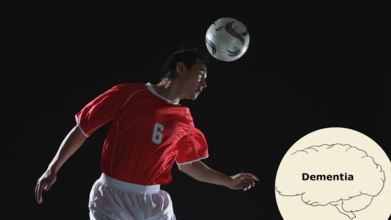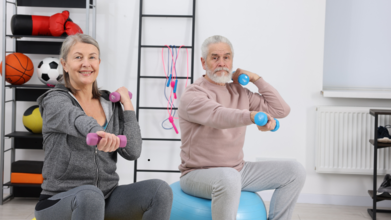- Health Conditions A-Z
- Health & Wellness
- Nutrition
- Fitness
- Health News
- Ayurveda
- Videos
- Medicine A-Z
- Parenting
- Web Stories
Is Working Out On An Empty Stomach A Fitness Hack Or A Recipe For Disaster?

When it comes to fitness, many people claim to have all the hacks and tricks that will help your body get back into shape. While social media is full of hacks, you cannot try just any one as you do not know what may cause harm to your body and what will not. One such trick that many people have been trying is working out on an empty stomach. While previous studies have shown that working out kills your hunger, will you be causing harm to your body if you tire it out without food? Or will it help you achieve your fitness goals quicker?
Many people wonder if there's an optimal time to work out, specifically whether it's better to exercise on an empty stomach (fasted) or after eating (fed). Fasted workouts involve exercising after a period of abstaining from food, often following an overnight fast. While some studies suggest potential benefits to fasted workouts, it's important to weigh these against possible drawbacks. The key difference lies in how your body sources energy, during a fasted workout, your body is more likely to tap into stored fat for fuel.
What Are The Potential Benefits Of Fasted Workouts?
One potential benefit of fasted workouts is that they may enhance fat burning. When you exercise after fasting for a significant period, which is often six hours or more like right after you wake up, your body's glycogen stores which is basically stored carbohydrates are depleted. This forces your body to break down fat for energy. Some studies show that this can lead to a greater proportion of fat being burned during exercise. Additionally, fasted workouts can also improve insulin sensitivity and reduce insulin levels. Insulin is a hormone that regulates blood sugar, and improved sensitivity can lower the risk of conditions like type 2 diabetes. However, research on these benefits is ongoing, and more studies are needed.
What Are The Potential Risks Of Fasted Workouts?
Working out without eating might make you feel more hungry. And some studies say you might burn less energy later in the day. Also, if you have diabetes or take medicine for your blood sugar, working out without eating might be bad for you. It can make your blood sugar go too low. Sometimes, working out without eating can make you feel more tired. And it can make your body make more of a thing called cortisol. Cortisol is like a stress thing, and too much of it can be bad. It can make you gain belly fat, make your body use insulin worse, and make your muscles weaker. So, you need to think about if working out without eating is right for you.
A Few Things To Keep In Mind
Moving your body regularly is really good for you, both how you feel and how your body works. When you exercise, you can lose extra weight or get stronger muscles. But it's not just about looking good. Whether you are exercising on an empty stomach or not, you need to keep a person like your trainer or a healthcare professional in the loop. While these things may help certain people, you never know what kind of underlying issues you may have. Many people go through their entire lives not facing any issue, until one of their actions triggers a negative reaction. So as exercise helps keep you from getting sick, you too have pay attention to your health, regardless of whether you are exercise or not. It makes your heart stronger, so you're less likely to have heart problems. And it can lift your mood, which helps you feel less sad or stressed. When you're active, your brain works better too. So, exercise is like a super tool that helps your whole body and mind stay healthy and happy.
Love Playing Football? Studies Show That Footballers Face A Higher Dementia Risk

Credits: Canva
Football, the world’s most popular sport, may come with an invisible cost: brain health. While players are celebrated for their stamina, skill, and longevity on the pitch, research shows that elite footballers are more likely to develop dementia and related neurodegenerative diseases later in life compared with the general population.
The main factor? Heading the ball.
The Swedish Study: What It Found
A major cohort study, published in The Lancet Public Health in 2023, followed 6,007 male footballers who had played in Sweden’s top division between 1924 and 2019. Their health outcomes were compared with 56,168 men from the general population.
- 8.9% of footballers were diagnosed with a neurodegenerative disease versus 6.2% of controls.
- Footballers had a 1.46 times higher risk of developing these conditions.
- Alzheimer’s disease and other dementias were significantly higher among players, with a 62% increased risk.
- No increased risk was found for motor neuron disease.
Surprisingly, footballers had a lower risk of Parkinson’s disease.
But the most striking finding was the difference between player positions. Outfield players, who head the ball regularly, showed a 50% higher risk compared with the general population, while goalkeepers, who rarely head the ball, showed no significant increase in risk.
This position-based difference strongly suggests that repetitive head impacts, even those not causing concussions, play a central role in long-term brain health risks.
Confirming Earlier Evidence
These Swedish results echo a 2019 Scottish study published in The New England Journal of Medicine, which found that former professional footballers were 3.5 times more likely to die of neurodegenerative disease compared with controls. That study also highlighted that defenders, who head the ball most often, were at the greatest risk.
Together, these studies strengthen the link between heading the ball and higher dementia risk, adding to growing international concern about football’s long-term safety.
Also Read: 21-year-old Billy Vigar Of Chichester City Dies Of Sustaining Brain Injury
Why Football Differs From Other Sports
Sports like boxing, rugby, American football, and ice hockey are already well-known for head injury risks. However, football is unique because concussions are relatively rare (<0.1 events per 1,000 player-hours), yet players repeatedly use their heads to control and redirect the ball.
This creates frequent “sub-concussive impacts”, blows to the brain too mild to cause immediate symptoms but capable of triggering long-term neurodegenerative changes. Chronic traumatic encephalopathy (CTE), a condition linked to repeated head trauma, has already been identified in athletes from other collision sports. Football’s heading tradition may be creating similar risks.
Changing the Game: Calls for Action
- Recognizing these risks, football associations have started to act.
- In the UK, heading is restricted in children’s training sessions.
- UEFA has issued guidelines limiting headers in youth football.
- In England, rules now cap the number of high-force headers in training for adult professionals.
Experts, however, stress that these measures may not be enough. Tara Spires-Jones, professor of neurodegeneration at the University of Edinburgh, noted that the stark difference between outfield players and goalkeepers reinforces the link between head impacts and dementia. She emphasized that while sports and physical activity overall reduce dementia risk, avoiding repetitive head injury is crucial for brain protection.
Has Modern Football Changed the Risk?
One question remains: do today’s footballers face the same level of risk as those who played in the mid-20th century?
The Swedish study noted that most players diagnosed with neurodegenerative disease had careers before the 1970s. Since then, major changes have reshaped the sport:
- Leather balls, which absorbed water and became heavier, have been replaced by lighter synthetic ones.
- Training methods, tactics, and playstyles have evolved, potentially reducing—or even increasing—head trauma exposure.
- The modern game involves far more matches and intense training, meaning players may head the ball more frequently over a lifetime.
- Researchers caution that the long-term risks for today’s players remain uncertain, and ongoing monitoring is essential.
Should People Suffering From Migraines Exercise? Neurologist Answers

(Credit-Canva)
For people who suffer from migraines, even normal activities like concentrating on work, holding a conversation can be difficult. These are things we do not think twice about, however, simply going through these can be a major task for people who suffer with migraines.
So, what about exercising? It is an activity that requires a lot of movements, some of which require you to do movements that jerk your body like jumping jacks. Is it safe for people with migraines to work out? According to Dr Sudhir Kumar, a Hyderabad-based neurologist, the answer is yes.
Getting regular physical activity is hugely helpful for people who get migraines because it can often make your headaches happen less often and feel less painful when they do occur. While a super-hard, intense workout might seem like it would only make your head hurt more, exercising smart and making it a habit can be a very effective way to prevent future migraine attacks. However, there are some things you need to keep in mind before doing so.
How to Exercise Smartly to Prevent Migraines
To get the most benefit from working out and avoid accidentally causing a migraine, people need to be mindful of five simple rules:
Be Consistent, Not Extreme
It's the steady routine that pays off. Doing regular exercise at a medium effort level (moderate intensity) helps keep migraines away. On the flip side, sudden, super-tough, or "all-or-nothing" workouts—like running a marathon with no training—can shock your system and easily trigger an attack. The goal is to build a steady habit, like a morning walk or a bike ride a few times a week, rather than pushing yourself to exhaustion once a month.
Figure Out Your Personal Triggers
Everyone is different, and certain activities might be a trigger just for you. For instance, some people find that lifting very heavy weights causes a headache, while others get one from running outdoors on a very sunny day or simply forgetting to properly warm up their muscles. The best way to understand these unique headache causes is to keep a diary of your headaches and write down what you did right before the migraine started.
Watch the Clock (Timing Matters)
Doing a very intense workout right before bed, late in the evening, can make it hard for you to fall asleep or get good rest. Poor sleep is a well-known migraine trigger, so late-night intensity can create a double problem. To protect your sleep, it's generally best for migraine sufferers to plan their workouts for the morning or during the day.
Pick the Right Environment
Your surroundings can put stress on your senses. To avoid this sensory strain, choose a workout spot that is comfortable. Cool, well-aired rooms with soft lighting are much better than places that are hot, stuffy, or have bright, intense lights that can make your head ache worse.
Try Adding Mind-Body Activities
You can actually increase the headache-fighting power of your physical activity by adding calming practices. Things like yoga, deep breathing exercises, and mindfulness meditation are great because they help you manage stress and relax tight muscles in your neck and shoulders, both of which are common contributors to migraine pain.
Do Aerobic Exercises Help Migraines?
Dr. Sudhir explains that scientific research has repeatedly shown that regular aerobic exercise—that's any activity that gets your heart pumping, like brisk walking, cycling, or swimming—is highly effective. The recommendation is to aim for a moderate effort level, for about 30 to 40 minutes, three times a week. In fact, some studies suggest that doing this type of exercise consistently can reduce the frequency and severity of migraines just as well as certain preventive medications. The very best approach combines this steady cardio with gentle strengthening and stretching exercises for your neck and shoulders.
Working Out These 5 Zones Can Help Older Adults Stay Fit, According To Fitness Expert

Credits: Canva
Strength training becomes increasingly important as people age, but many older adults make the mistake of training only the muscles they see in the mirror. According to Marfred Suazo, a New York City, based fitness professional known as “Fonz the Trainer,” who spoke to Fox News, targeting overlooked muscle groups is the key to moving well, staying pain-free, and living independently.
Suazo, who has trained thousands of seniors, shared with Fox News Digital which areas of the body matter most as we get older, and why focusing on them builds true longevity.
Moving Beyond “Mirror Training”
“Most people train what they see in the mirror, chest, arms, quads, and maybe abs if they’re feeling ambitious,” Suazo told Fox News Digital. “That’s what I call mirror training.”
While this type of workout may boost appearance, Suazo explained it leaves people unbalanced, with rounded shoulders, tight chests, and sore backs or knees.
“If you want to age strong, pain-free, and confident, you need non-mirror training,” he said. “That means working the muscles you don’t see but feel every single day.”
Zone 1: Power Zone — Glutes and Hamstrings
These muscles form the foundation of movement, helping with sitting, standing, climbing, and protecting the lower back.
“Your glutes and hamstrings give you the power to move with confidence,” Suazo said. He recommends deadlifts, hip thrusts, and single-leg bridges. “Control the movement, squeeze at the top, that’s where the real work happens.”
Zone 2: Posture Zone — Upper and Mid-Back
Strengthening the back keeps the body upright and breathing freely. Without it, posture often collapses into a slouch as people age.
“A strong back pulls your shoulders into alignment,” Suazo explained. His go-to moves include bent-over rows, cable rows, and bodyweight rows. “Pull through the elbows and picture yourself standing taller with every rep.”
Zone 3: Stability Zone — Core and Obliques
The core isn’t just about six-pack abs, it’s about stability and spine protection.
“True core training teaches your body to brace and protect your back during daily life,” Suazo said. His favorite move is the Paloff press: anchor a band, press it straight out, and resist rotation. “It’s simple, but it trains real-world stability.”
Zone 4: Mobility Zone — Shoulders and Rotator Cuff
Shoulders are involved in almost every upper-body movement. When they’re weak or stiff, everything else suffers.
“Healthy shoulders are a must if you want to keep training for decades,” Suazo told Fox News Digital. He suggests face pulls, rear delt flies, band rotations, and controlled overhead presses. “This combination keeps shoulders strong and mobile.”
Zone 5: Grip Zone — Hands and Forearms
Grip strength is directly linked to independence as people age, yet it’s often one of the first things to decline.
“Grip strength makes a difference in every other lift and in everyday tasks,” Suazo said. He recommends farmer’s carries — aiming to carry about 70% of body weight in total — as well as simple hangs from a pull-up bar.
A Simple Routine to Start
For beginners, Suazo suggests a quick non-mirror workout:
- 3 sets of 8–10 deadlifts
- 3 sets of 10 Paloff presses per side
- 3 farmer’s carries for 30–45 seconds each
- A short walk to finish
- Training for Longevity, Not Just Looks
Suazo emphasized that safety and form come first, especially for older adults. “Controlled movement matters more than how heavy you go,” he said. Warming up, progressing gradually, and listening to the body are essential.
“Non-mirror training is how you stay strong, upright, and pain-free,” Suazo added. “When you train the muscles behind you, the ones in front look and perform better too.”
© 2024 Bennett, Coleman & Company Limited

